PAUL GAUGUIN...작품 세계
프랑스의 화가인 피사로와 알게 되면서 인상파의 영향을 받게 되었으나,
차차 이에 싫증을 느껴 단순화된 색채, 뚜렷한 선,
그리고 특이한 색조로 독자적인 화풍을 확립하였다.
한때 네덜란드의 화가 고흐와 함께 생활하며 그림을 그렸으나,
뜻이 맞지 않아 헤어졌다.
후에 남태평양의 타히티 섬으로 가서 그 곳 원주민과 어울려 살면서
그들의 특색 있는 생활과 풍경을 그리다가, 병고에 시달리며 외롭게 죽었다.
작품으로는 [부채를 든 여인],[타히티의 여자들],[황색의 크리스트]등이 있다.
폴 고갱은 후기 인상주의 화가 중 고흐와 함께
인간의 내면세계에 관심을 기울인 화가였다.
그는 잘 알려진 대로 늦은 나이에
거의 독학으로 화가의 길로 들어서 영국의 소설가 섬머셋 모음이
그의 삶을 소재로 [달과 6펜스]라는 소설을 엮어 낼만큼
파란만장한 인생을 영위한 작가이다.
고갱은 인간의 내면 중 종교적인 것,
장식적인 것을 주제로 그림을 그렸다.
기법면에서는 인상주의의 극복이라는 의미에서
원색의 면에 검은 테두리를 쌓아 구획주의를 추구했다.
또한 대담한 변형과 왜곡,
강렬한 원색의 사용 등으로 장식적 효과를 냈으며,
이로서 화면의 평면화를 시도한다.
그는 남태평양의 한 섬인 타히티로 옮겨가면서
기독교와 원시적 토속 신앙의 결합이라는 특이한 예술 세계를 구축한다.
증권거래인의 직업을 그만두고 아마추어 취미 작가에서
본격적인 직업 화가의 길로 들어선 고갱은 1886년부터 90년에 걸친
5년간을 프랑스 지역인 브르타뉴에서 보내게 된다.
거기서 그는 신앙심이 두텁고 순박한 농민들의
단조롭고도 건실한 삶에 매료되어 그들을 주제로 많은 그림을 그리게 된다.
[황색의 그리스도]는 1889년에 그린 것으로서
영혼의 세계에 살아있는 예수 그리스도와 현실 세계에서 신앙의 삶을 영위하는
여인들을 한 자리에 배치함으로서 내적인 것과 외적인 것의 종합을 이루고 있다.
사실 고갱은 1880년대 후반
자신의 작품에 대해서 '종합'이라는 말을 쓰고 있다.
이 의미는 기법과 내용 양쪽 면에서 적용되는데,
기법면에는 인상주의의 세세한 붓터치에 의한
'분석적'기법에 대응해 마치 스테인드 글래스에서 볼 수 있듯이
하나의 형태를 단면의 색채들의 집합으로 표현해 내는 것이다.
내용적 측면은 위에서 설명한 대로 현실과 상상의 세계가
한 화면에 종합적으로 나타나는 것을 뜻한다.
[황색의 그리스도]는 이런 '종합주의'의
특징을 잘 나타내고 있는 작품이라고 할 수 있다.
 Three Tahitians
Three Tahitians
 Three Tahitians
Three Tahitians
 The Bathers, 1898
The Bathers, 1898
 Mahana No Atua
by Paul Gauguin
Mahana No Atua
by Paul Gauguin
 Mahana No Atua
Mahana No Atua
 Femmes Tahitiennes aux Mangues
Femmes Tahitiennes aux Mangues
 La Orana Maria
La Orana Maria
 Pres de la Mer (gold foil text)
Pres de la Mer (gold foil text)
 When Will You Marry
When Will You Marry
 Red Flowers
Red Flowers
 Red Flowers
Red Flowers
 When Are You Getting Married? (detail)
When Are You Getting Married? (detail)
 The Bathers, 1898
The Bathers, 1898
 The Bathers, 1898
The Bathers, 1898
 Mountain Road
Mountain Road
 Three Tahitians
Three Tahitians
 Three Tahitians
Three Tahitians
 Landscape with Two Breton Women
Landscape with Two Breton Women
 Landscape with Two Breton Women
Landscape with Two Breton Women
 Matamoe
Matamoe
 Landscape at the Pouldu
Landscape at the Pouldu
 Landscape at the Pouldu
Landscape at the Pouldu
 When are You Getting Married?
When are You Getting Married?
 Tahitian Woman with Blossom (detail)
Tahitian Woman with Blossom (detail)
 Nevermore
Nevermore
 Two Tahitian Women with Mangoes,1899 II
Two Tahitian Women with Mangoes,1899 II
 The Siesta
The Siesta
 The Siesta
The Siesta
 Still Life with a Mandolin, 1885
Still Life with a Mandolin, 1885
 Making Merry
Making Merry
 Making Merry
Making Merry
 Harvest Scene
Harvest Scene
 Two Tahitian Women with Mangoes,1899
Two Tahitian Women with Mangoes,1899
 Chemin a Papeete
Chemin a Papeete
 Tahitian Landscape
Tahitian Landscape
 Tahitian Landscape
Tahitian Landscape
 Street in Tahiti
Street in Tahiti
 Tahitian Landscape, 1891
Tahitian Landscape, 1891
 Tahitian Landscape, 1891
Tahitian Landscape, 1891
 Where Do We Come From?
What Are We? Where Are We Going?
Where Do We Come From?
What Are We? Where Are We Going?
 Where Do We Come From?
What Are We? Where Are We Going?
Where Do We Come From?
What Are We? Where Are We Going?
 Women of Tahiti, 1891
Women of Tahiti, 1891
 Women of Tahiti, 1891
Women of Tahiti, 1891
 Landscape at Le Pouldu
Landscape at Le Pouldu
 The Siesta
The Siesta
 The Siesta
The Siesta
 Mountain Road
Mountain Road
 A Farm in Brittany
A Farm in Brittany
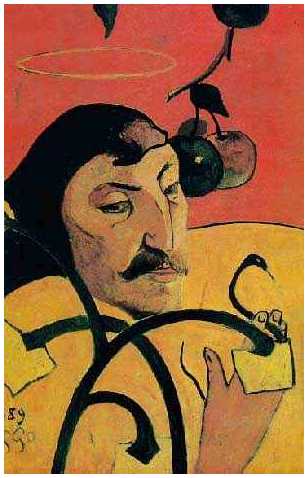 戱畵的(희화적) 自畵像(자화상)
戱畵的(희화적) 自畵像(자화상)
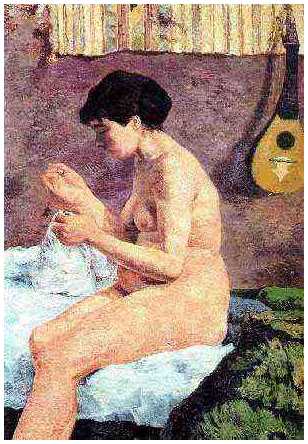 나부습작(裸婦習作)
나부습작(裸婦習作)
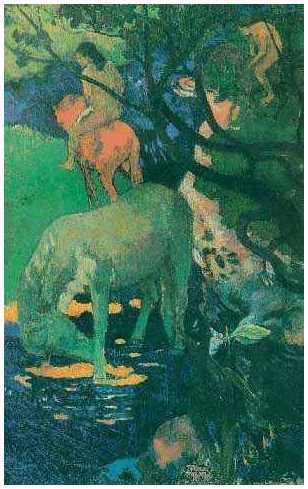 백마
백마
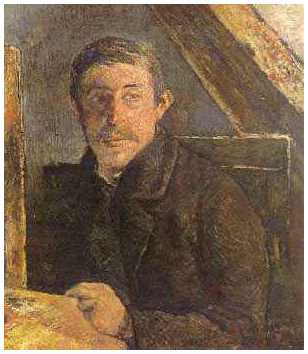 캔버스 앞의 自畵像
캔버스 앞의 自畵像
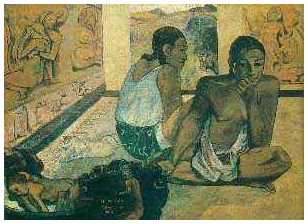 테 레리오아 꿈
테 레리오아 꿈
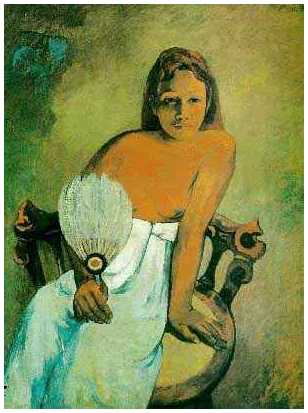 부채를 든 아가씨
부채를 든 아가씨
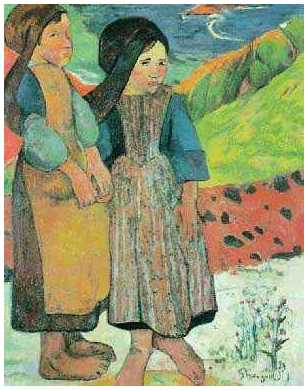 해변의 두 소녀
해변의 두 소녀
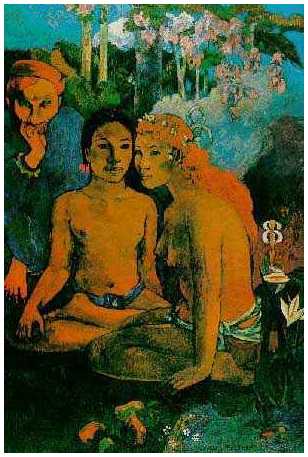 未開한 이야기
未開한 이야기
 Madame Mette Gauguin in Evening Dress,1884, oil on canvas,
National Gallery, Oslo. 122KB
Madame Mette Gauguin in Evening Dress,1884, oil on canvas,
National Gallery, Oslo. 122KB
 Still Life with Mandolin,1885, oil on canvas, Musee d'Orsay,
Paris. 86KB
Still Life with Mandolin,1885, oil on canvas, Musee d'Orsay,
Paris. 86KB
 Still Life with Profile of Laval,1886, oil on canvas, The
Josefowitz Collection. 131KB
Still Life with Profile of Laval,1886, oil on canvas, The
Josefowitz Collection. 131KB
 The Alyscamps at Arles,1888, oil on canvas, Musee d'Orsay, Paris.
138KB
The Alyscamps at Arles,1888, oil on canvas, Musee d'Orsay, Paris.
138KB
 Portrait of Madeline Bernard (The sister of the artist Em
ile Bernard),1888, oil on canvas, Musee de Peinture et de Sculpture
Grenoble. 119KB
Portrait of Madeline Bernard (The sister of the artist Em
ile Bernard),1888, oil on canvas, Musee de Peinture et de Sculpture
Grenoble. 119KB
 The Artist's Mother (?),1889, oil on canvas, Staatsgalerie, Stuttgart. 122KB
The Artist's Mother (?),1889, oil on canvas, Staatsgalerie, Stuttgart. 122KB
 Schuffnecker's Studio (The Schuffnecker Family),1889, oil on canvas,
Musee d'Orsay, Paris.
Schuffnecker's Studio (The Schuffnecker Family),1889, oil on canvas,
Musee d'Orsay, Paris.
 Breton Girls Dancing, Pont-Aven, 1888
Breton Girls Dancing, Pont-Aven, 1888
 Brittany Landscape, 1888
Brittany Landscape, 1888
 Fatata te Miti (By the Sea), 1892
Fatata te Miti (By the Sea), 1892
 Haystacks in Brittany, 1890
Haystacks in Brittany, 1890
 The Invocation, 1903
The Invocation, 1903
 Landscape at Le Pouldu, 1890
Landscape at Le Pouldu, 1890
 Madame Alexandre Kohler, 1887/1888
Madame Alexandre Kohler, 1887/1888
 Parau na te Varua ino (Words of the Devil), 1892
Parau na te Varua ino (Words of the Devil), 1892
 Self-Portrait, 1889
Self-Portrait, 1889
 Self-Portrait Dedicated to Carrière, 1888,1889
Self-Portrait Dedicated to Carrière, 1888,1889
 Still Life with Peonies, 1884
Still Life with Peonies, 1884
 Te Pape Nave Nave (Delectable Waters), 1898
by Paul Gauguin
**위의 그림들 저작권자가 항의하면 즉시 지우겠습니다.
자료를 퍼서 옮기시는 분도 이에 따라 주세요.**
Te Pape Nave Nave (Delectable Waters), 1898
by Paul Gauguin
**위의 그림들 저작권자가 항의하면 즉시 지우겠습니다.
자료를 퍼서 옮기시는 분도 이에 따라 주세요.**
|